Royal bees, to bee precise!
Arrival of the Queens
With summer kicking off at Glensheen, we welcomed royalty into our midst! Two Queen Bees and their near thousand attendants each arrived at Glensheen coming all the way from California!
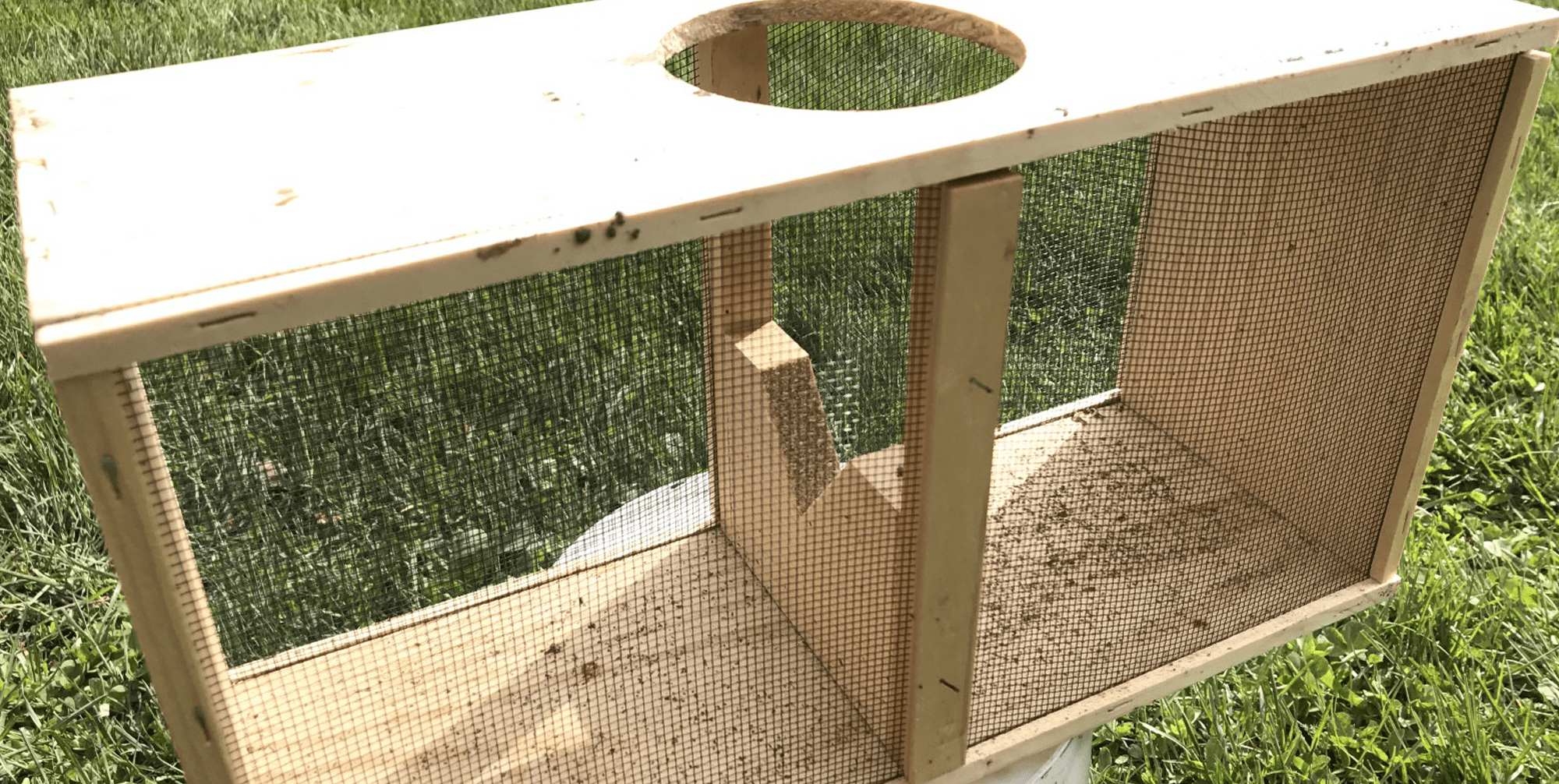
This is the bee cage where the bees are stored for transport. Roughly 1,500 workers are placed in the box while sleeping. The queen is stored in a smaller cage (not pictured) within this cage. Her cage fits in the circular cut out and is attached to a sugar water drip. The sugar water feeds the queen and her workers
Despite the glamorous and well-loved life of a queen bee, their introduction to their subjects was rather dramatic. Stored in the bee cage shown above, the Queen and roughly 1,500 worker bees were placed together with a sugar water feeder for transportation to Glensheen. However the Queen wasn’t Queen yet.
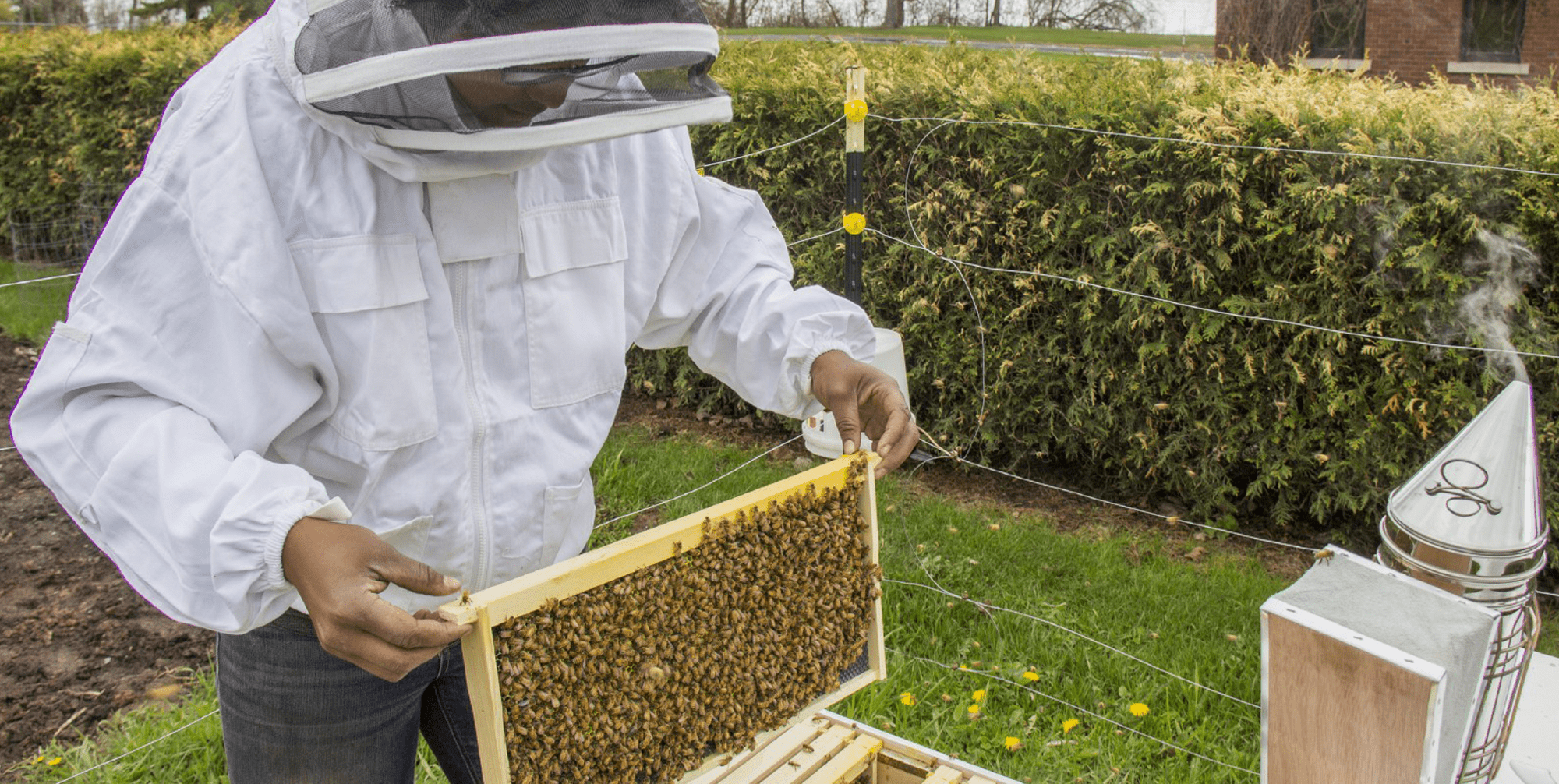
Pictured on the right, the smoker is used to calm the bees down. Considering how docile our bees are, the beekeeper’s jacket that Emily is wearing mostly keeps the bees from getting tangled in hair or flying up your nose!
A smaller “royal” suite within the bee cage protected the Queen while her new subjects adjusted to her scent. During the trip the bees quickly become addicted to their Queen’s scent, ensuring their loyalty. They are so addicted that if you carry their Queen’s cage with you her bees will follow you!

Holding the smoker, Emily smokes the bees to calm them down so both beekeeper and bee can do their job safely and happily.
On the day of their arrival our head gardener Emily Ford, and her bee-mentor, John Otis, helped the bees through the process of hiving. Set with new, spacious hives, a pollen patty, and a sugar water drip to jump start the colony, the bees were left to settle into their new home.
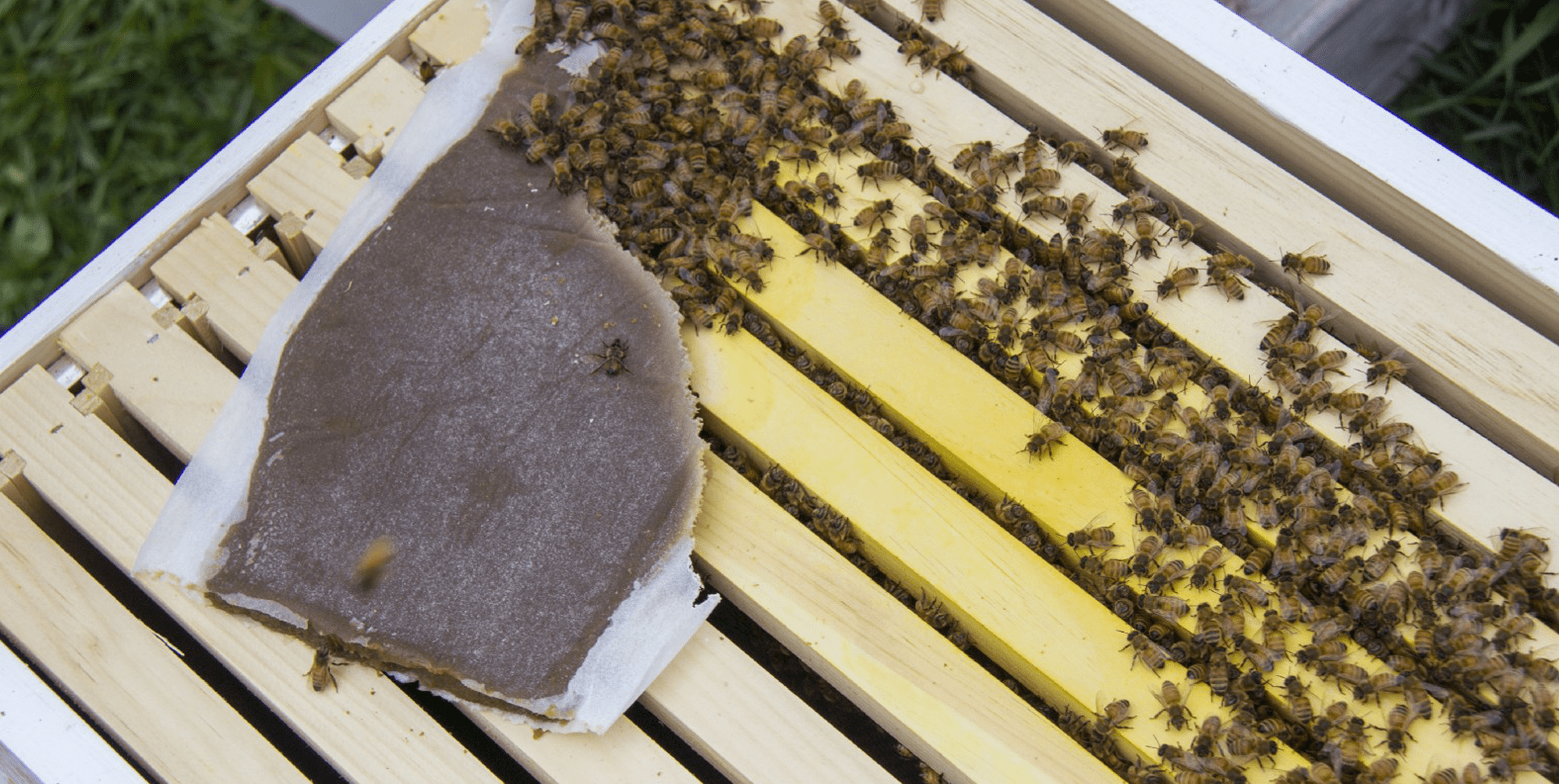
The pollen patty sitting on top of the frames helps provide bees with an immediate source of pollen to help jumpstart the hive.
The Bees’ First Week
As the marketing assistant, I quickly volunteered for a chance to take photos of the hive during the first week check in. Gearing up with Emily, a soon-to-bee master beekeeper, we opened up the hives to check on progress. To our delight, we found that both hives are doing well! And to my relief, we have some of the friendliest bees around.
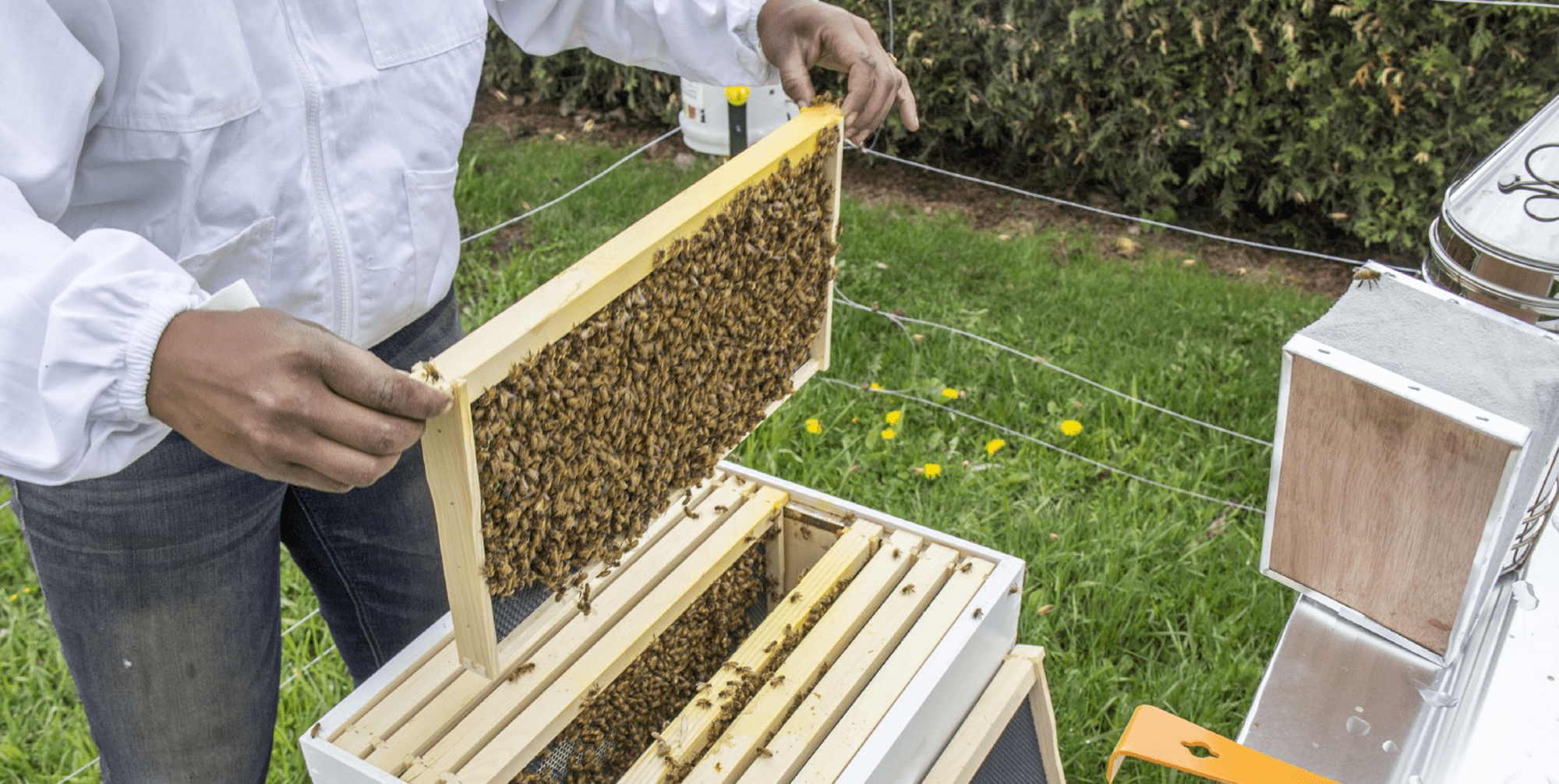
Emily is holding a frame, mostly filled with bees and freshly built comb. The black frame you see next to the hive is an empty frame the bees haven’t expanded to yet. It has shallow comb shapes to help guide bee construction!
As expected, we found all the good signs. Each hive had nearly 4–5 frames filling up with comb. When nearly eight frames have been filled, the hive will be expanded to include another level with ten more frames. Eventually the lower portion, called the deep hive, will house the queen and her brood while upper sections called supplements can be harvested for sweet, sweet honey.

In the upper corner the black honeycomb base of the frame is still visible, with bits of yellow wax slowly building the comb to full size.
During the process we kept an eye out for the Queens, but this advanced version of Where’s Waldo was beyond us. However, we know the queens are doing well because we found larva and eggs! Soon our hives will be bustling with bees born and raised at Glensheen!
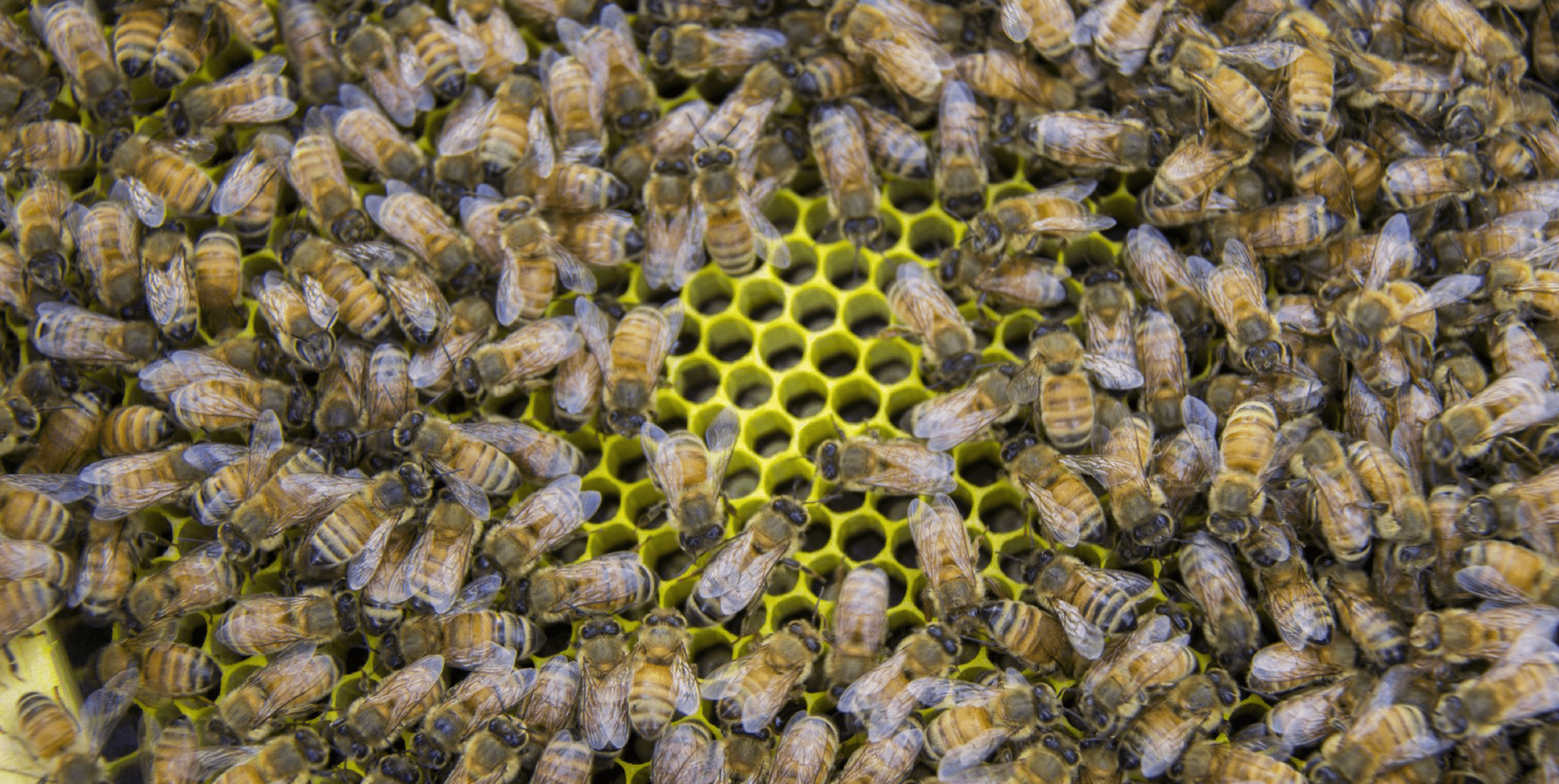
In the exposed section of comb, you can see little white larva curled up in their bright yellow honey comb, surrounded by hundreds of their older sisters busy as work.
An Estate fit for Royalty
Bees, as we all know, are the pollinating champions of the world. At Glensheen we have dozens upon dozens of flowers for our bees to forage from, but the bees will forage for food in a roughly 2 mile radius! So neighbors remember our bees are friends, not foes!

Check out all the pollen covering the bee’s head! And he landed right in the palm of Emily’s hand!
Like all creatures, bees need water, and surprisingly more than you’d think. Luckily Glensheen has three fresh water sources for the bees to drink from with Bent Brook, Tischer Creek, and Lake Superior all on the estate. If you want to see the beehives, head towards the formal gardens and tucked in a corner by the hedges are the beehives. One would think the often relentless wind coming off the lake would be an issue, but the garden hedges block it almost entirely.

In order to get a mass of bees to move for a good photo of exposed comb, we politely “tickle” above them which causes the bees to make space. During the process the bee on the end of Emily’s finger was like “hey, no tickles, only hugs”
Our bees are in great hands! Our head gardener, Emily Ford, took the University of Minnesota Bee Lab’s Beekeeping in Northern Climates to prepare for our new arrivals. The U of M’s Bee Lab is one of the best in the nation. In addition, John Otis, Glensheen’s bee-mentor, has already been a huge help. Lastly, a big thanks to Kelly Beekeeping and Miller Manufacturing for donating our beehives! Stay tuned for more updates on our bees!
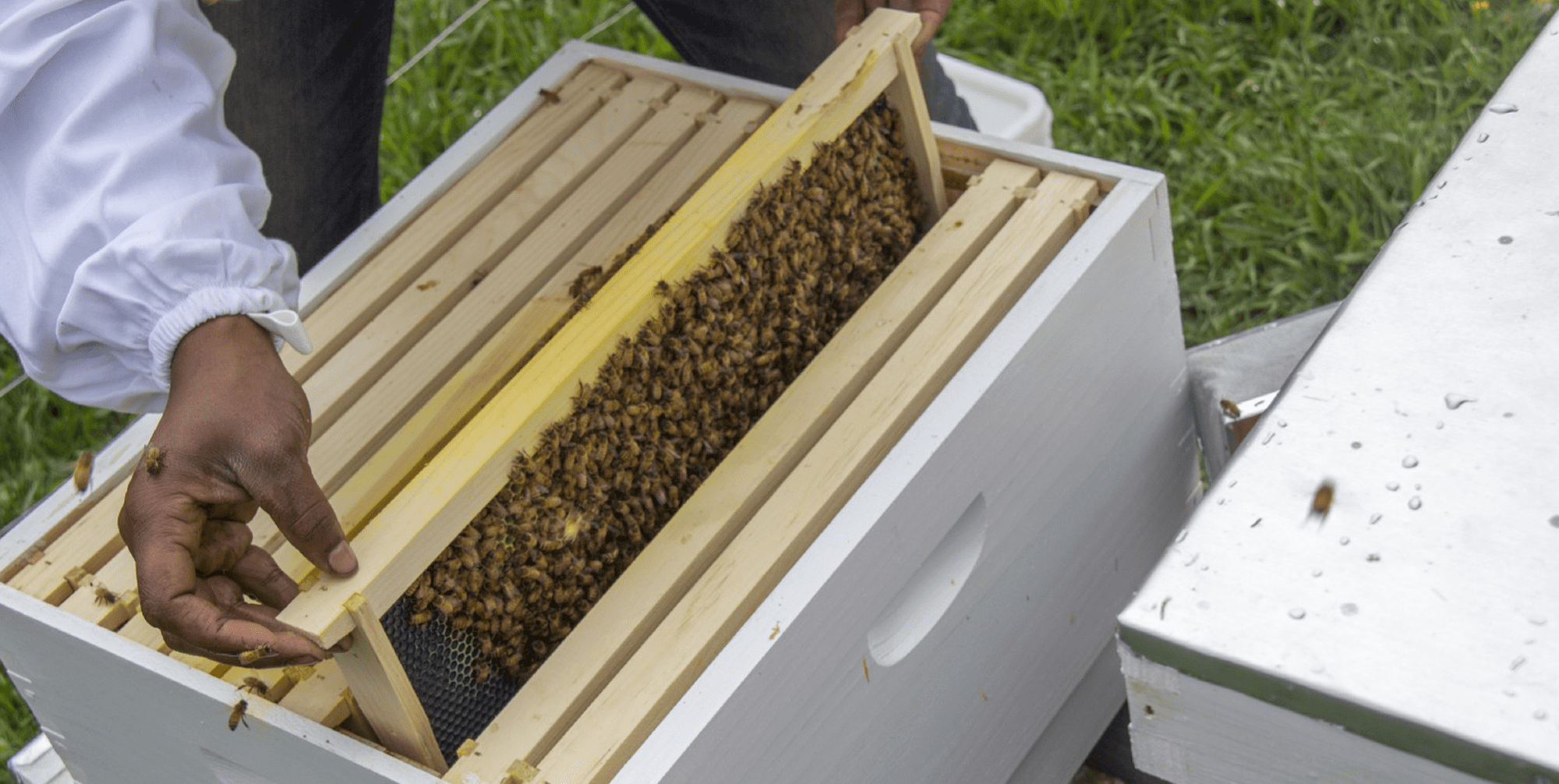
Keep on building, Bees!!!
